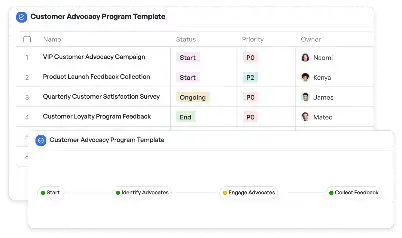Neural Signal Compression Standard Guide
Achieve project success with the Neural Signal Compression Standard Guide today!

What is Neural Signal Compression Standard Guide?
The Neural Signal Compression Standard Guide is a comprehensive framework designed to streamline the process of compressing neural signal data. Neural signals, such as those captured from EEG, fMRI, or other neuroimaging techniques, are often voluminous and require efficient compression for storage, transmission, and analysis. This guide provides a standardized approach to ensure data integrity while optimizing storage and processing capabilities. In the context of neuroscience and neurotechnology, where real-time data processing is critical, this guide becomes indispensable. For example, in brain-computer interface (BCI) applications, the ability to compress and transmit neural signals in real-time can significantly enhance device performance and user experience.
Try this template now
Who is this Neural Signal Compression Standard Guide Template for?
This guide is tailored for professionals and researchers in the fields of neuroscience, neurotechnology, and biomedical engineering. Typical users include data scientists working on neural data analysis, engineers developing brain-computer interfaces, and clinicians involved in neuroimaging studies. For instance, a researcher analyzing EEG data for epilepsy detection can use this guide to compress and manage large datasets efficiently. Similarly, a neurotech startup developing wearable devices for cognitive monitoring can leverage the guide to optimize signal processing workflows.

Try this template now
Why use this Neural Signal Compression Standard Guide?
The Neural Signal Compression Standard Guide addresses several critical pain points in the field. First, it tackles the challenge of managing large neural datasets, which can be cumbersome and expensive to store. By providing a standardized compression framework, the guide ensures that data integrity is maintained while reducing storage costs. Second, it facilitates real-time signal processing, which is crucial for applications like BCIs and neuroprosthetics. The guide's emphasis on efficient algorithms and workflows enables faster data transmission and processing. Lastly, it supports interoperability across different platforms and devices, making it easier for researchers and developers to collaborate and share data. For example, a team working on a multi-center neuroimaging study can use the guide to ensure consistent data compression standards across all sites.

Try this template now
Get Started with the Neural Signal Compression Standard Guide
Follow these simple steps to get started with Meegle templates:
1. Click 'Get this Free Template Now' to sign up for Meegle.
2. After signing up, you will be redirected to the Neural Signal Compression Standard Guide. Click 'Use this Template' to create a version of this template in your workspace.
3. Customize the workflow and fields of the template to suit your specific needs.
4. Start using the template and experience the full potential of Meegle!
Try this template now
Free forever for teams up to 20!
The world’s #1 visualized project management tool
Powered by the next gen visual workflow engine




